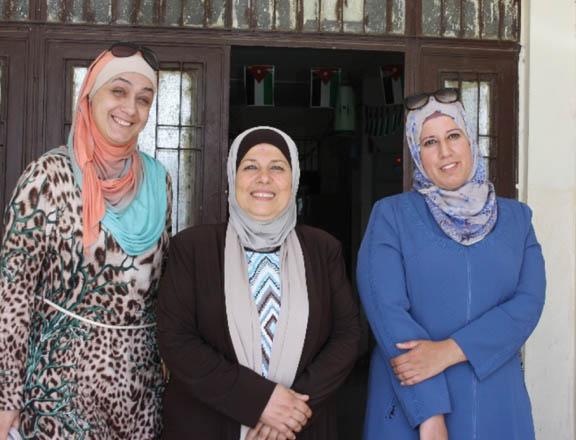You are here
Ministry, UNESCO partner to uphold school maintenance around Kingdom
By Camille Dupire - Oct 03,2018 - Last updated at Oct 03,2018

A number of schools around the Kingdom suffer from severe overcrowding that hinders the children’s learning process (AFP photo)
AMMAN — A new project aimed at supporting evidence-based decision-making and planning in the field of school maintenance on Wednesday kicked off under the title “Technical assistance for the EMIS System and WebGIS tool for the School Maintenance System, Standards and Procedures”, launched by the Ministry of Education (MoE) in collaboration with UNESCO.
Highlighting the importance of maintaining and improving school infrastructure during the launching ceremony, Minister of Education Azmi Mahafzha asserted its special importance as Jordanian public schools are facing “critical issues” such as overcrowding, which greatly impact the environment within school facilities.
In recent remarks, MoE Spokesperson Walid Jallad had highlighted that around 50,000 students moved from private to public schools since the start of the 2019-2020 academic year with the number expected to increase.
“Overcrowding in government schools is not a new problem but, today, some classrooms are filled by 60 students, which impacts the teacher, the students and the educational environment,” Teachers Association President Basel Freihat said in previous remarks to The Jordan Times, stressing that the average classroom should contain 30 students, especially during the elementary stage “which is the most important phase in the student’s life”.
The year-long project, which is supported by the German International Cooperation Agency (GIZ), will see UNESCO providing technical assistance and support, ensuring capacity for the future spatial visualisation in WebGIS, according to a UNESCO statement, which noted that the project’s outputs are directly aligned with the National HRD Strategy 2016-2025 and the National Education Strategic Plan 2018-2022, which specifically highlights that “a large number of schools have urgent maintenance needs”.
“This project aligns strategically with the MoE’s goals to improve school infrastructure, addressing the issue of rising numbers of students shifting from private to public schools and the associated impact on the quality of learning in schools and access and equity in education,” UNESCO Project Officer, Sa’eda Ramzi said during a presentation detailing the project’s approach and impact.
“In parallel, the School Maintenance Steering Committee will work to develop a multi-level model for school facility management in Jordan, including capacity development opportunities for staff at the MoE and directorate level, to monitor and report on school maintenance using the ministry’s platforms,” Ramzi continued, stressing that this will enable electronic and automated data capture, workflows, monitoring and reporting, with the aim of facilitating systematic, structured and evidence-based decision-making.
Speaking on behalf of UNESCO Representative to Jordan Costanza Farina, UNESCO Project Officer Mary Anne Therese Manuson said: “It is important to recall the 2030 Agenda as we embark on this initiative.”
“Sustainable Development Goal 4 speaks to the importance of building and upgrading education facilities that are child, disability and gender-sensitive and provide safe and non-violent, inclusive and effective learning environments for all,” she highlighted, thanking GIZ for “their continued and long-standing partnership with UNESCO in the field of education”.
GIZ Project Manager Stephanie Petrasch commended the partnership with UNESCO and the ministry, stressing GIZ’s keenness to “keep supporting the Ministry of Education on such an important theme: school maintenance”.
Related Articles
AMMAN — The Ministry of Education successfully concluded a two-day policy dialogue with partners and national stakeholders to assess progres
AMMAN — Kafa Akroush is head of the Gender Unit at Jordan’s Ministry of Education (MoE).
AMMAN (UNESCO) — Final exams are currently under way across the Kingdom.













